Abstract
STUDY OBJECTIVE--To investigate the relationship between self reported health status and sickness absence. DESIGN--Analysis of questionnaire and sickness absence data from the first phase of the Whitehall II study--a longitudinal study set up to investigate the degree and causes of the social gradient in morbidity and mortality. SETTING--London offices of 20 civil service departments. PARTICIPANTS--Altogether 6895 male and 3413 female civil servants aged 35-55 years. Analysis was conducted on 88% of participants who had complete data for the present analysis. MAIN RESULTS--A strong inverse relation between the grade of employment (measure of socioeconomic status) and sickness absence was observed. Men in the lowest grade had rates of sickness absence six times higher than those in the highest grade. For women the corresponding differences were two to five times higher. In general, the longer the duration of absence, the more strongly did baseline health predict rates of absence. However, the health measures also predicted shorter spells, although to a lesser extent. Job satisfaction was strongly related to sickness absence with higher rates in those who reported low job satisfaction. After adjusting for health status the association remained for one to two day absences, but was greatly reduced for absences longer than three days. CONCLUSION--There was a strong association between ill health and sickness absence, particularly for longer spells. The magnitude of the association may have been underestimated because of the strength of the association between grade of employment and sickness absence. It is proposed that sickness absence be used as an integrated measure of physical, psychological, and social functioning in studies of working populations.
Full text
PDF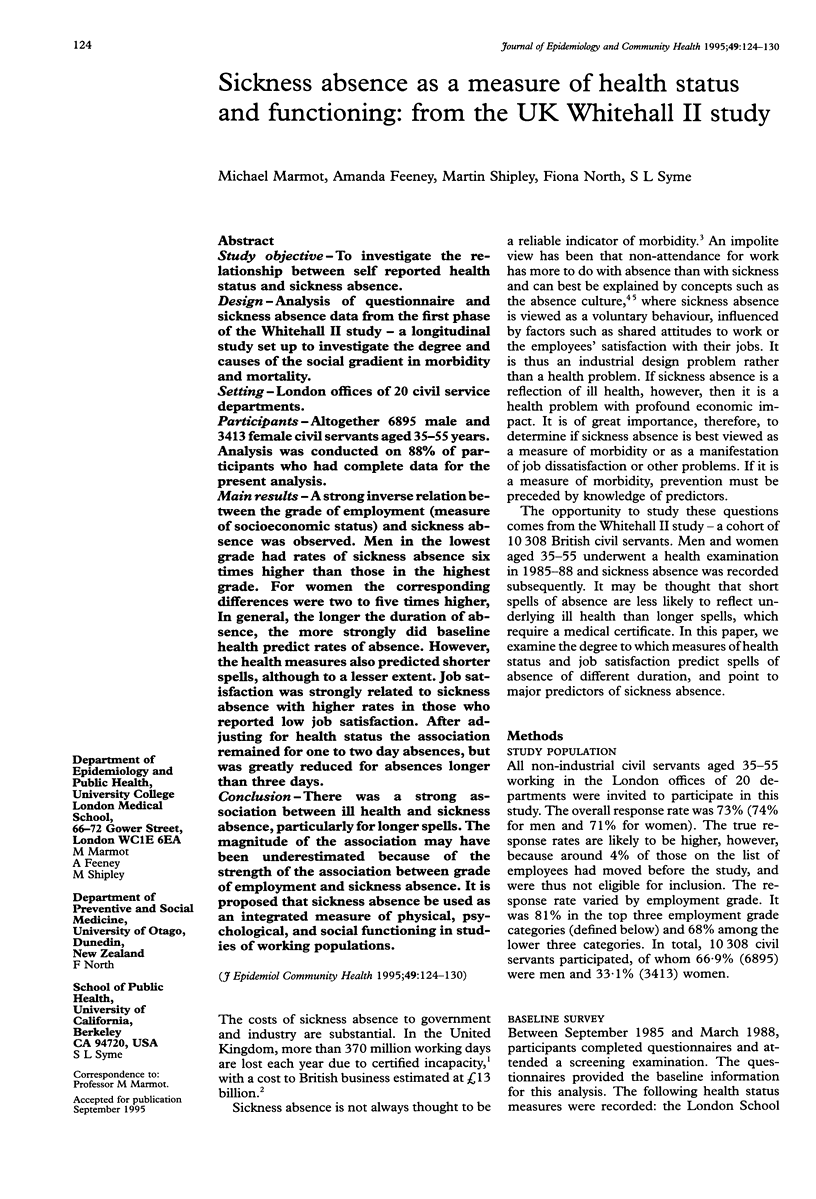
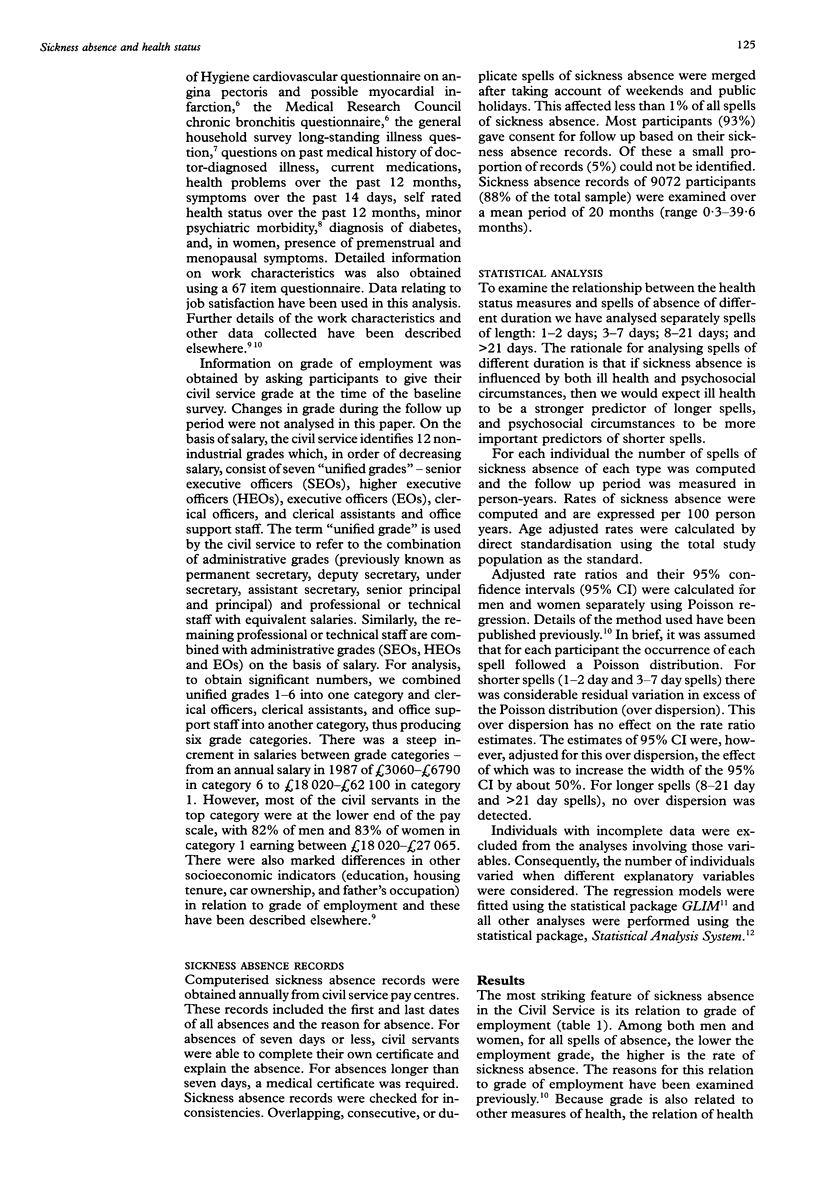
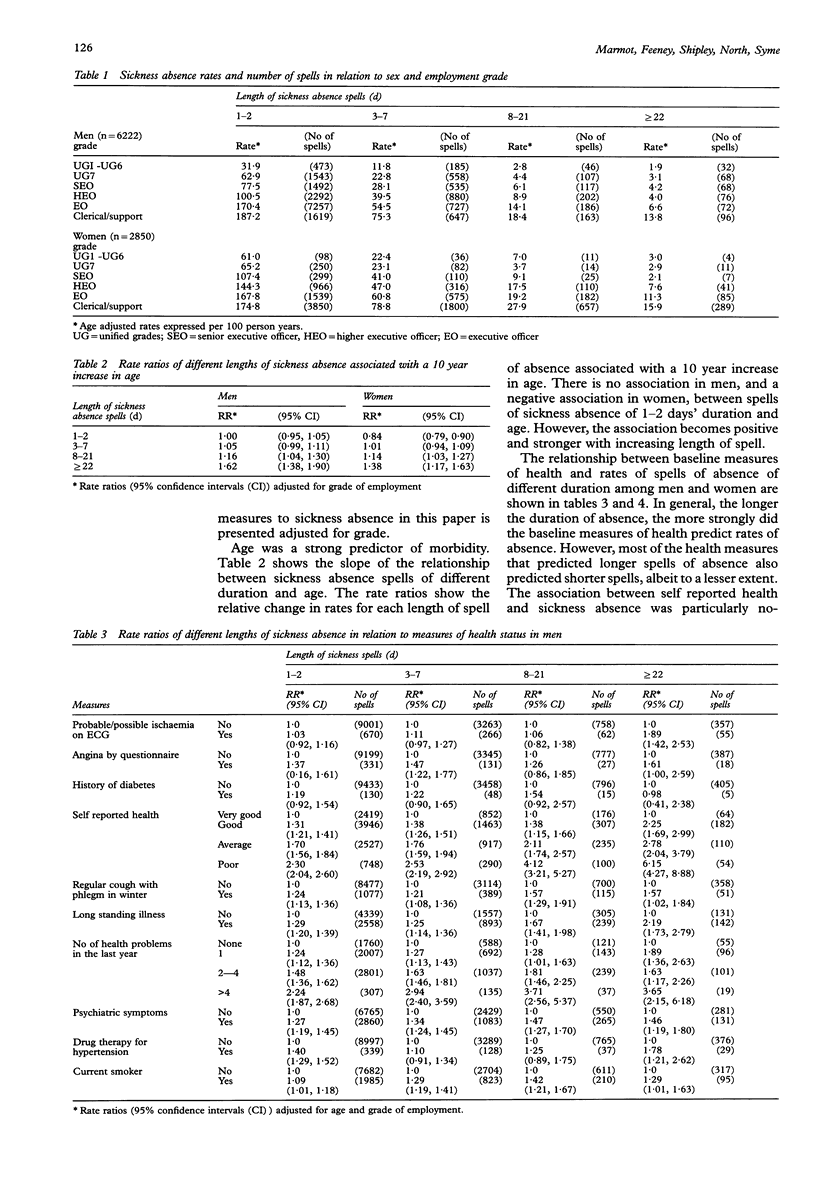
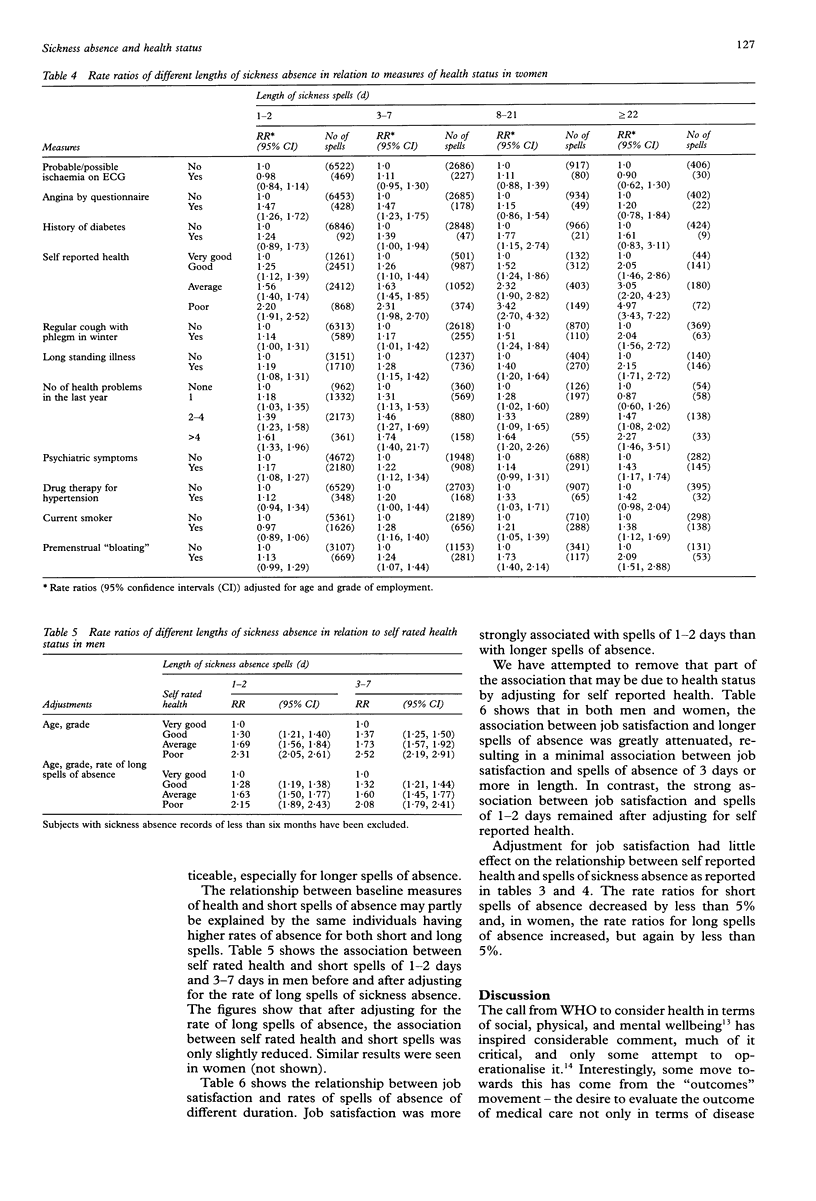
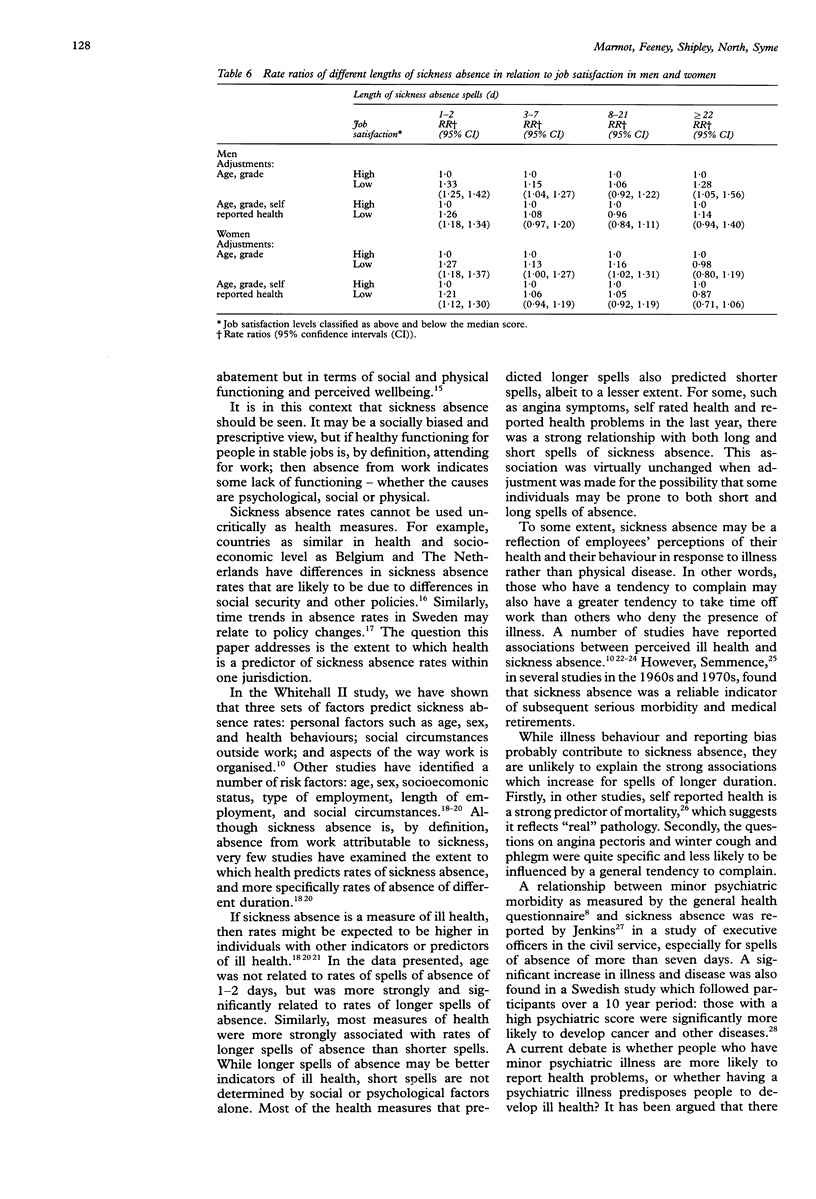
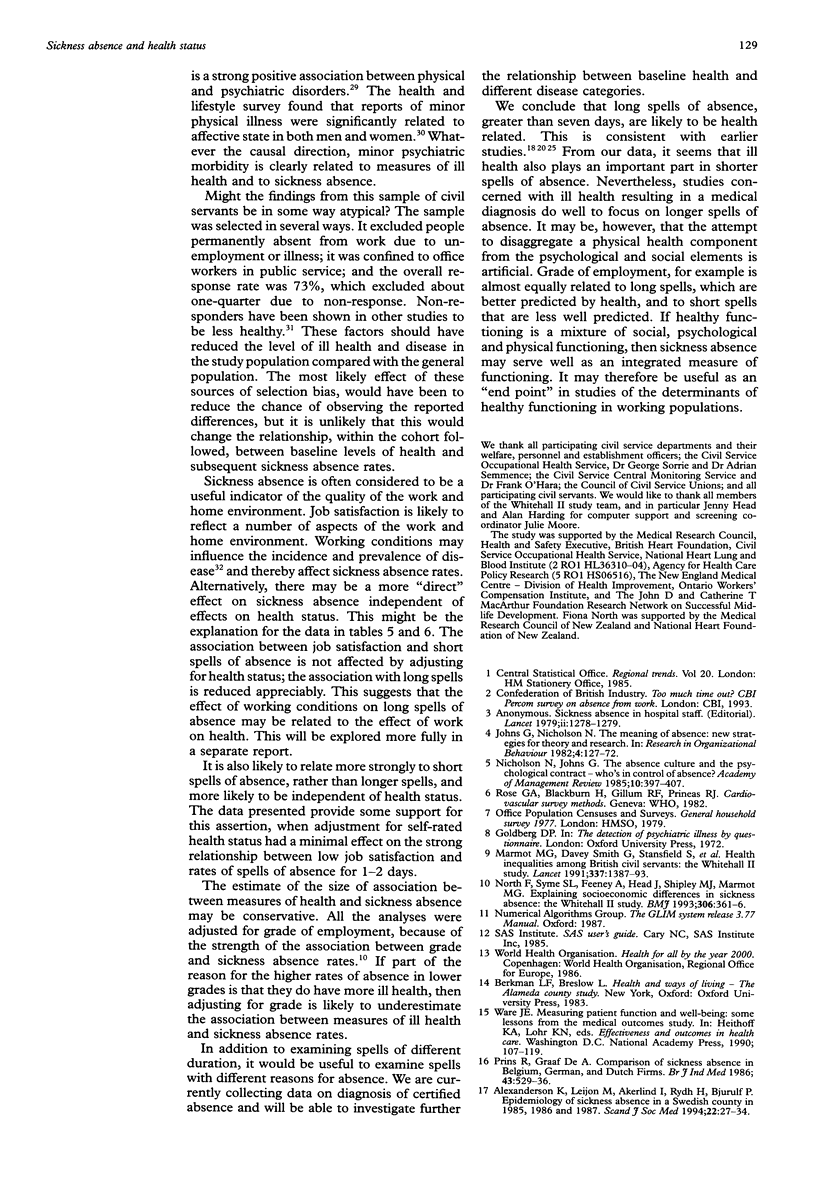
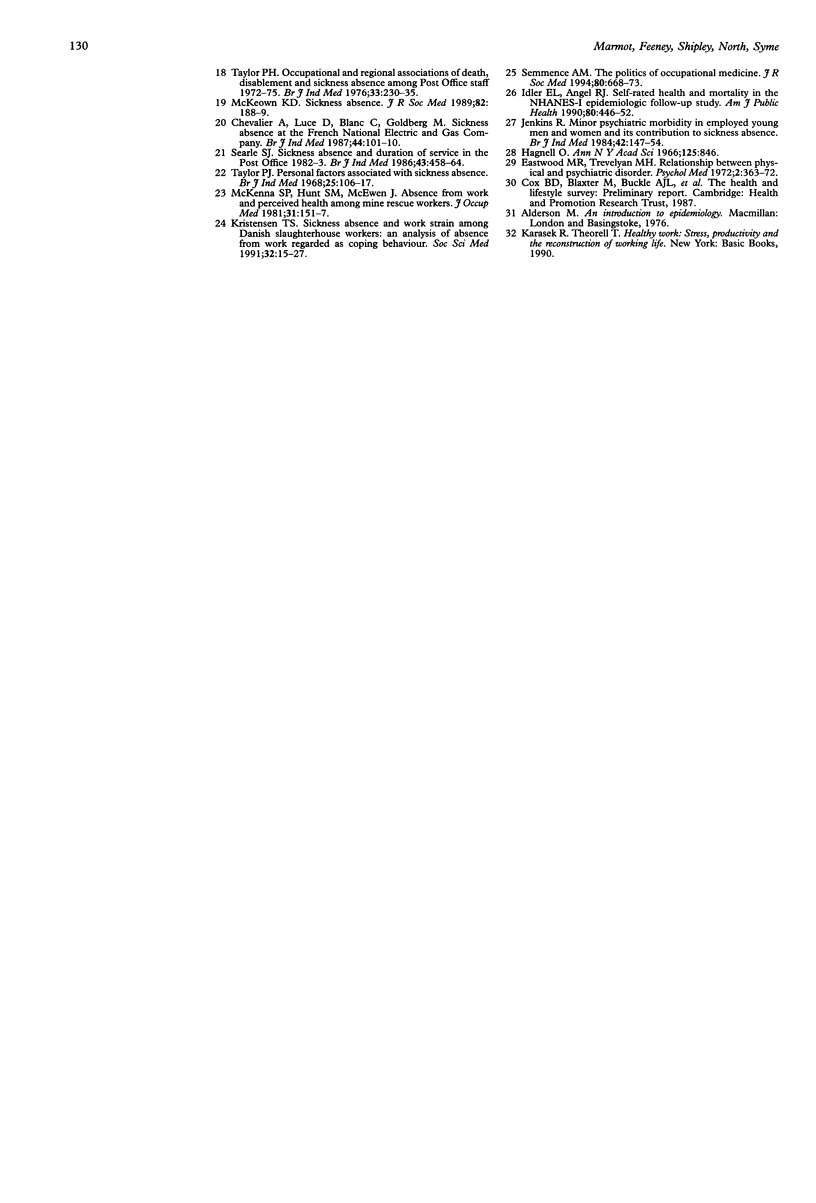
Selected References
These references are in PubMed. This may not be the complete list of references from this article.
- Alexanderson K., Leijon M., Akerlind I., Rydh H., Bjurulf P. Epidemiology of sickness absence in a Swedish county in 1985, 1986 and 1987. A three year longitudinal study with focus on gender, age and occupation. Scand J Soc Med. 1994 Mar;22(1):27–34. doi: 10.1177/140349489402200105. [DOI] [PubMed] [Google Scholar]
- Eastwood M. R., Trevelyan M. H. Relationship between physical and psychiatric disorder. Psychol Med. 1972 Nov;2(4):363–372. doi: 10.1017/s0033291700045177. [DOI] [PubMed] [Google Scholar]
- Hagnell O. The premorbid personality of persons who develop cancer in a total population investigated in 1947 and 1957. Ann N Y Acad Sci. 1966 Jan 21;125(3):846–855. doi: 10.1111/j.1749-6632.1966.tb45435.x. [DOI] [PubMed] [Google Scholar]
- Idler E. L., Angel R. J. Self-rated health and mortality in the NHANES-I Epidemiologic Follow-up Study. Am J Public Health. 1990 Apr;80(4):446–452. doi: 10.2105/ajph.80.4.446. [DOI] [PMC free article] [PubMed] [Google Scholar]
- Jenkins R. Minor psychiatric morbidity in employed young men and women and its contribution to sickness absence. Br J Ind Med. 1985 Mar;42(3):147–154. doi: 10.1136/oem.42.3.147. [DOI] [PMC free article] [PubMed] [Google Scholar]
- Kristensen T. S. Sickness absence and work strain among Danish slaughterhouse workers: an analysis of absence from work regarded as coping behaviour. Soc Sci Med. 1991;32(1):15–27. doi: 10.1016/0277-9536(91)90122-s. [DOI] [PubMed] [Google Scholar]
- Marmot M. G., Smith G. D., Stansfeld S., Patel C., North F., Head J., White I., Brunner E., Feeney A. Health inequalities among British civil servants: the Whitehall II study. Lancet. 1991 Jun 8;337(8754):1387–1393. doi: 10.1016/0140-6736(91)93068-k. [DOI] [PubMed] [Google Scholar]
- McKenna S. P., Hunt S. M., McEwen J. Absence from work and perceived health among mine rescue workers. J Soc Occup Med. 1981 Oct;31(4):151–157. doi: 10.1093/occmed/31.4.151. [DOI] [PubMed] [Google Scholar]
- McKeown K. D. Sickness absence. J R Soc Med. 1989 Apr;82(4):188–189. doi: 10.1177/014107688908200402. [DOI] [PMC free article] [PubMed] [Google Scholar]
- North F., Syme S. L., Feeney A., Head J., Shipley M. J., Marmot M. G. Explaining socioeconomic differences in sickness absence: the Whitehall II Study. BMJ. 1993 Feb 6;306(6874):361–366. doi: 10.1136/bmj.306.6874.361. [DOI] [PMC free article] [PubMed] [Google Scholar]
- Prins R., de Graaf A. Comparison of sickness absence in Belgian, German, and Dutch firms. Br J Ind Med. 1986 Aug;43(8):529–536. doi: 10.1136/oem.43.8.529. [DOI] [PMC free article] [PubMed] [Google Scholar]
- Searle S. J. Sickness absence and duration of service in the Post Office 1982-3. Br J Ind Med. 1986 Jul;43(7):458–464. doi: 10.1136/oem.43.7.458. [DOI] [PMC free article] [PubMed] [Google Scholar]
- Semmence A. M. The politics of occupational medicine. J R Soc Med. 1987 Nov;80(11):668–673. doi: 10.1177/014107688708001103. [DOI] [PMC free article] [PubMed] [Google Scholar]
- Taylor P. J. Occupational and regional associations of death, disablement, and sickness absence among Post Office staff 1972-75. Br J Ind Med. 1976 Nov;33(4):230–235. doi: 10.1136/oem.33.4.230. [DOI] [PMC free article] [PubMed] [Google Scholar]
- Taylor P. J. Personal factors associated with sickness absence. A study 194 men with contrasting sickness absence experience in a refinery population. Br J Ind Med. 1968 Apr;25(2):106–118. doi: 10.1136/oem.25.2.106. [DOI] [PMC free article] [PubMed] [Google Scholar]


